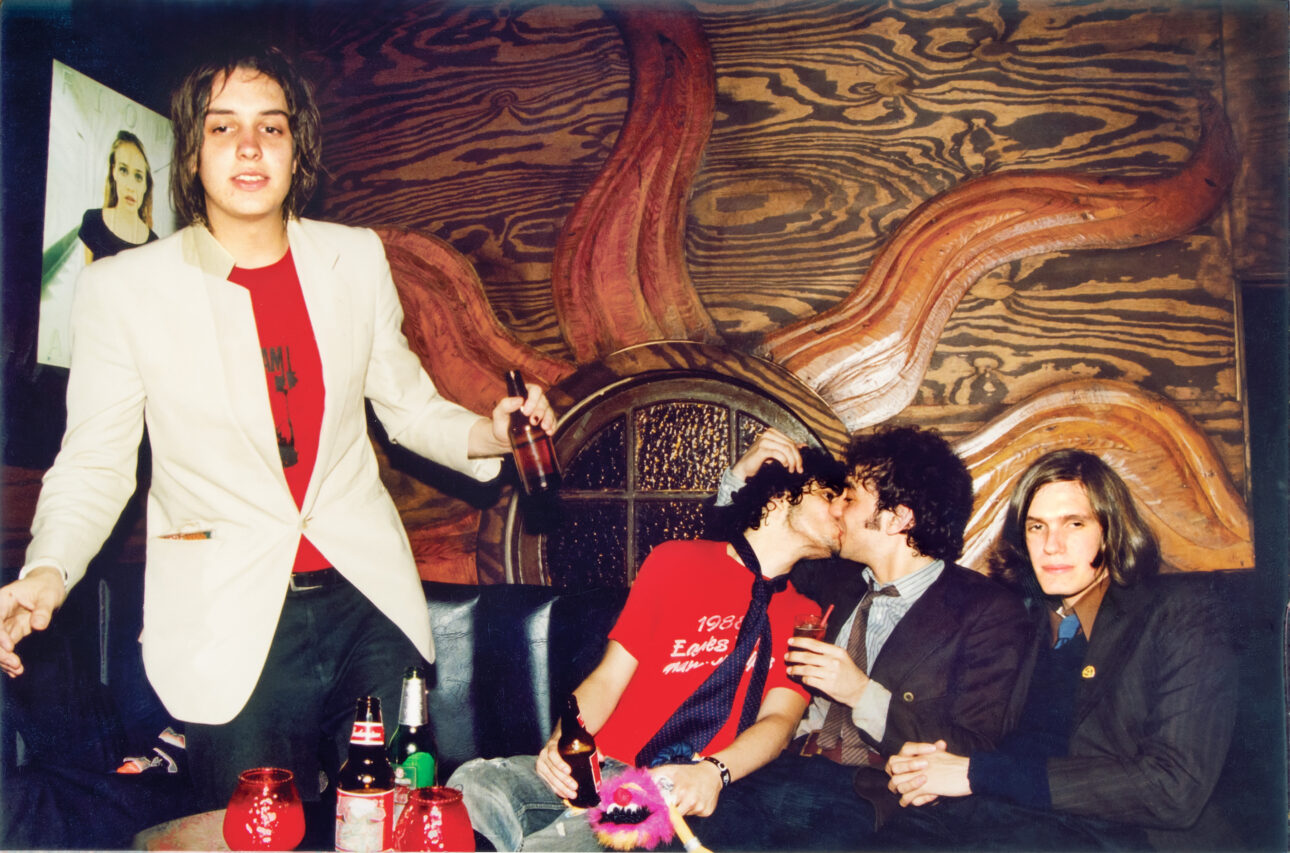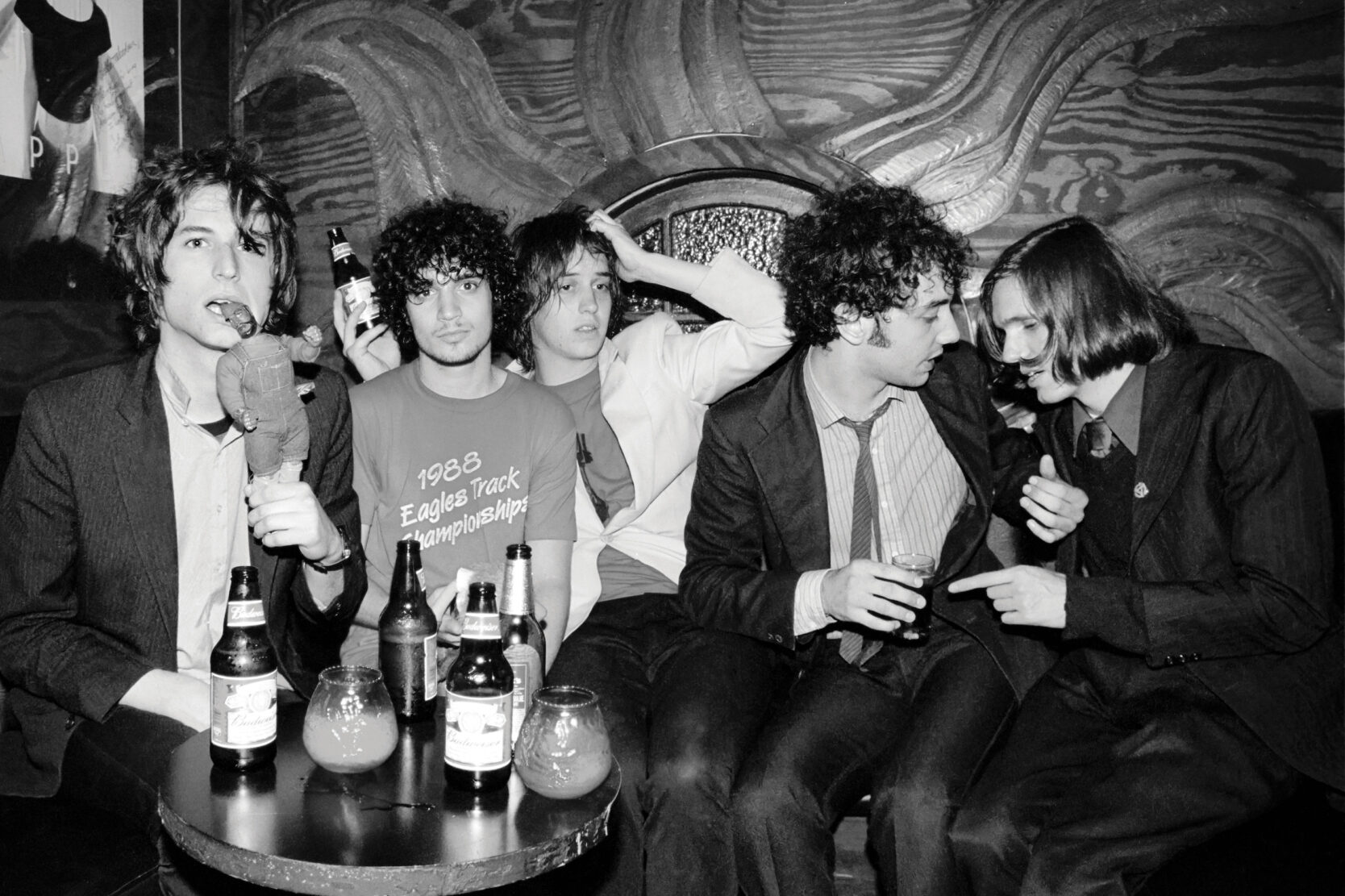If you go to a gig with Piper Ferguson, expect to play second fiddle to her camera. Whether she has a photo pass or not, Ferguson captures essential music moments at every turn.
A quarter century after she first picked up a camera on the recommendation of a cinematographer friend who advised Ferguson she could learn more about directing through photography, she has her first book, Indie/Seen: The Indie Rock Photography of Piper Ferguson. A large format collectible art book, at almost 300 pages, it features over 350 photographs of a cross-section of artists who fall under the catch-all phrase of “indie” most of them taken on film.
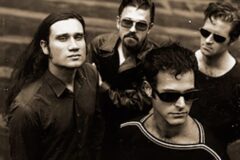
Also Read
30 Overlooked 1994 Albums Turning 30
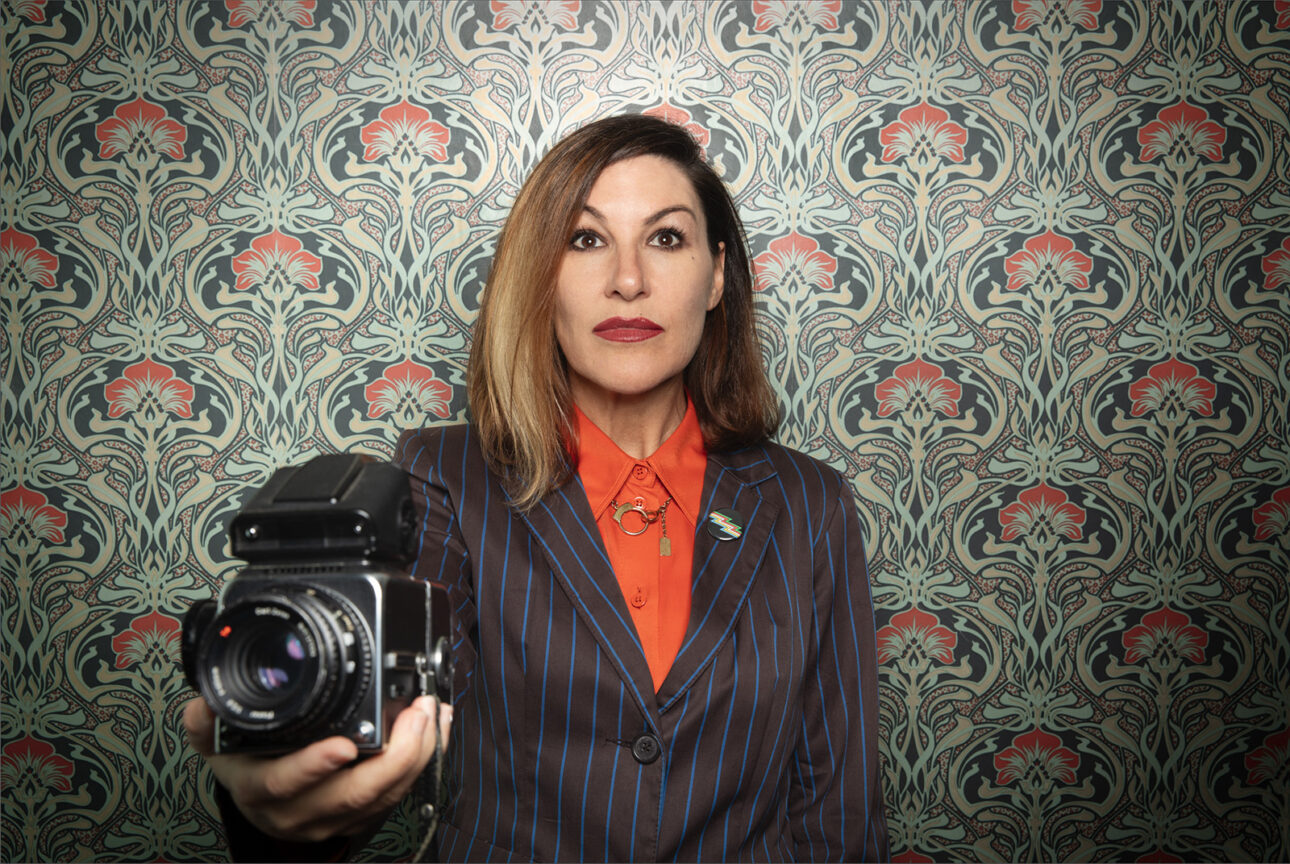
From The Strokes and The Rapture to Basement Jaxx, Brian Jonestown Massacre, Interpol, among many others, Ferguson sees frames that are only visible to her. That is, until she unveils what it was she saw in one of her photographs. Amy Winehouse, vulnerable and fragile on stage as she puts on a ballet slipper, balancing on her other foot. The Yeah Yeah Yeahs looking effortlessly cool on a New York City rooftop. M.I.A. looking worn but still taunting, casual and open at SXSW. Lucius looking like it is being beamed up from the neck up. KT Tunstall as a disco-fused cheerleader. And a pensive Beck, who graces the cover.
Johnny Marr has penned the foreword to the book. In it he says, “Piper’s work is about the moments. The moments happen and she can make a moment, and no matter where or what’s happening, she always manages to fit in like one of the band. That’s uncommon, and one of the reasons why you see what you see in the pictures.”
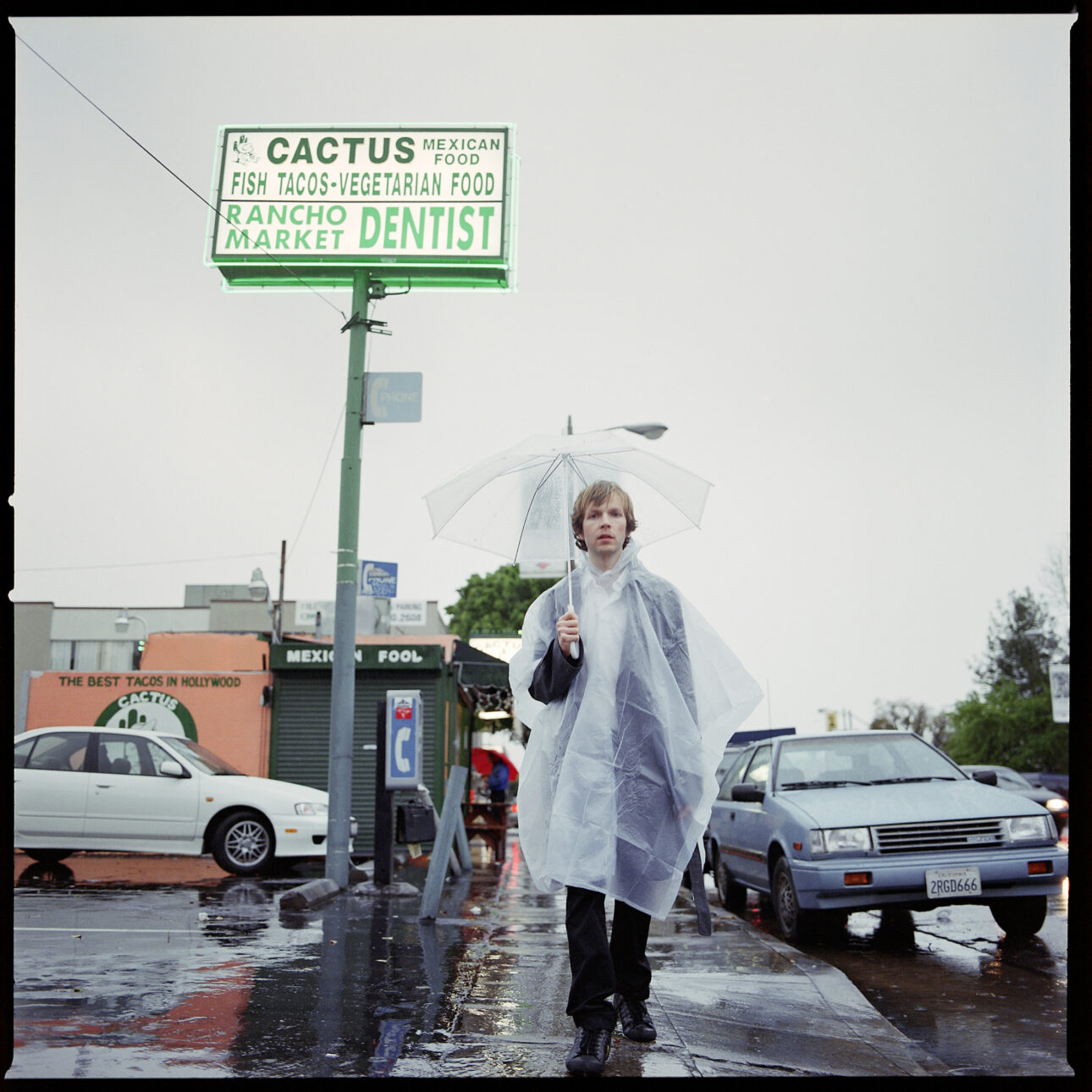
The book is bundled into five distinct sections. They range from live shots to candid ones, portraits to parties—including her own weekly indie dance party, Café Bleu, which hosted many artists, all of whom Ferguson snapped with her camera. As the music photographer for Levi’s when the brand was plying musicians with their wares, a chunk of the book is devoted to artists in unlikely scenarios including hanging out of windows. An original photographer of Coachella, Ferguson’s images of the festival over the years are one of a kind featuring Iggy Pop, Pulp, Justice and Radiohead, to mention just a few.
Interspersed throughout these iconic images are firsthand narratives from Ferguson, her words have so much passion and excitement for music and the people creating it.
From her garage command station of her Los Angeles home (also her makeshift studio), Ferguson is readying for the book-launch dance party and gallery show at the Regent Theater DTLA happening on the book’s release day, November 7. This is the first of a few events Ferguson has in place to amplify Indie/Seen. The week after she will be in conversation at the pop culture-centric bookstore Stories in Echo Park, and in December, she will participate in a Q&A at Zibby’s Bookshop in Santa Monica.
Here, she tells us tales of some of many unique shots in the book, plus her first ever national placement, which happened to be in SPIN.
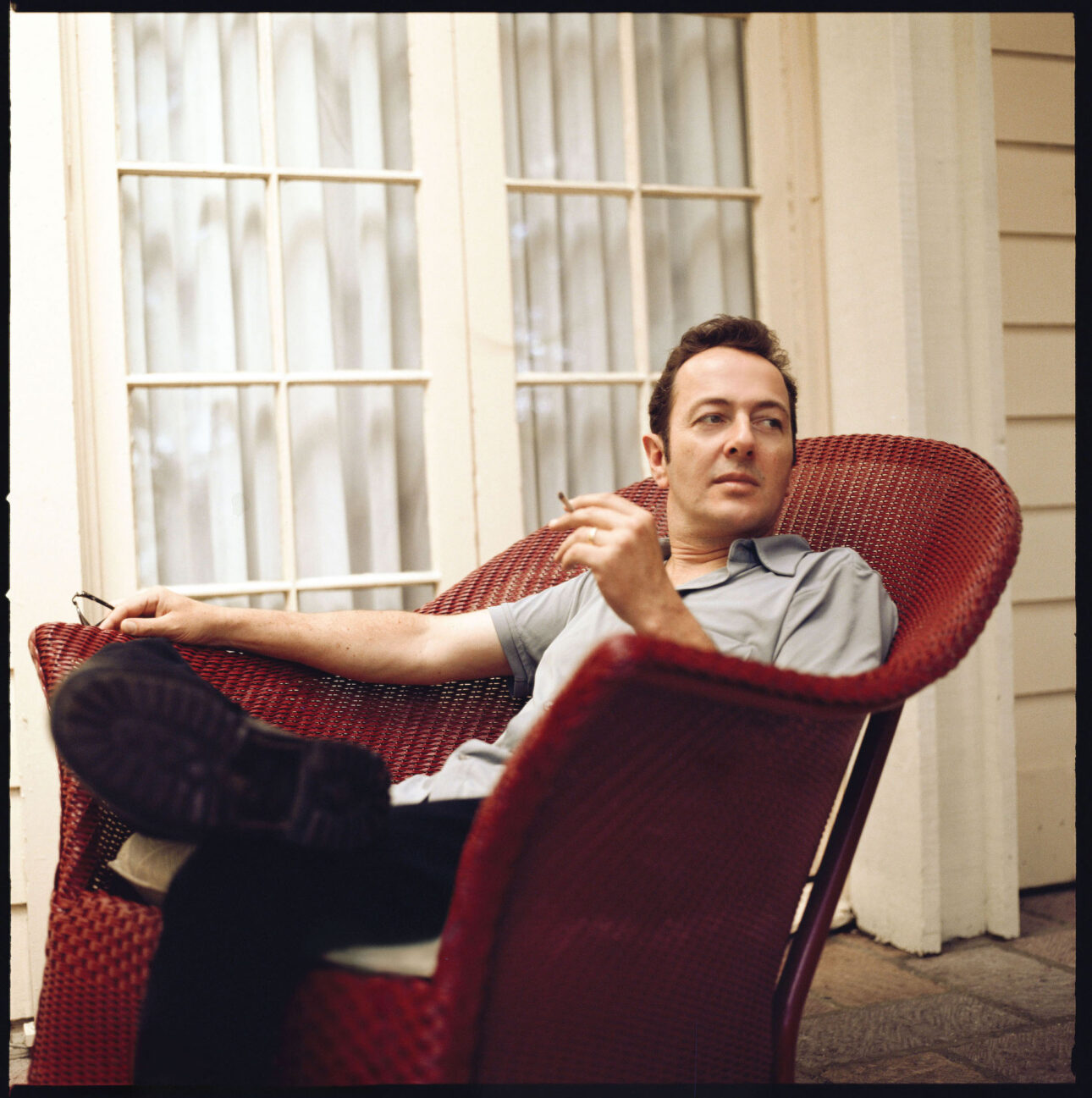
What was the impetus behind publishing your first book?
There were three things I wanted to do in my life: publish a book, make a documentary, and direct a feature film. [The documentary, 2022’s] Meet Me in the Bathroom reached out to me because they heard I had pictures and video of the early 2000s, which I did. I started digitizing the mini-DV tapes and going through all my photography to send to Pulse Films who were producing the film. From doing that, and having more time because of quarantining, I began the process of looking at my work and putting together the proposal for a “25 years” book.
How did you get connected with Insight Editions’ lifestyle imprint Weldon Owen?
I went to Vroman’s Bookstore and looked at their music photography books. I saw one called The Decade That Rocked about Mötley Crüe, Twisted Sister, Guns N’ Roses, Ozzy, Van Halen, everybody from the Sunset Strip. The photography was amazing. I looked up the top 100 music photography books on Amazon and that book came up. I saw it was published by Inside Editions Weldon Owen. I found the owner of Inside Editions on LinkedIn. I dropped my proposal in a message to him. The next day I had a publishing deal.
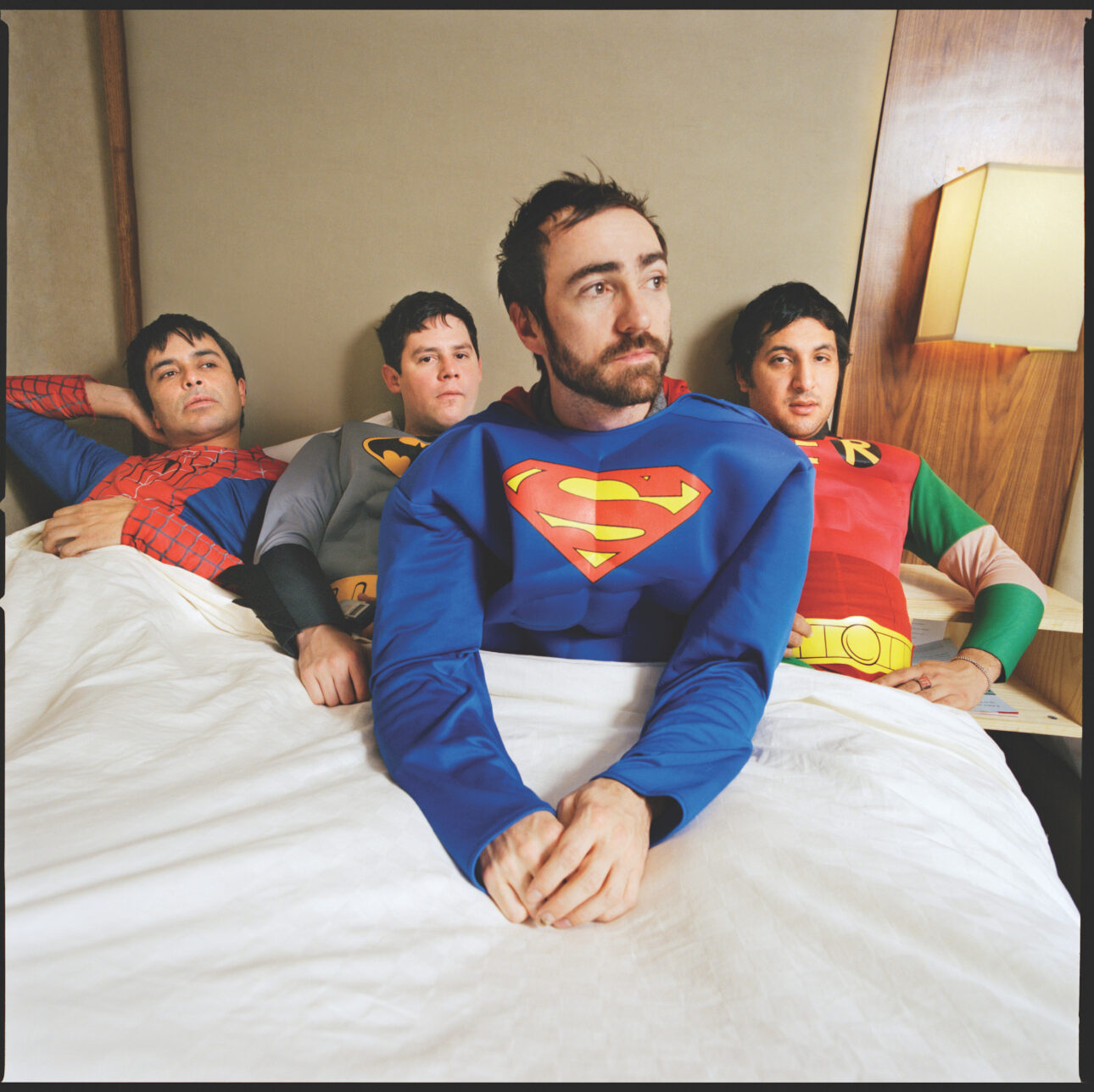
You mention in the book that your first national placement was in SPIN in 1999?
That’s right. Rage Against the Machine at the first Coachella. That picture was taken from on stage because they had to clear the photographers out of the pit because the barricade was about to break. There were bonfires out in the crowd. Plastic bottles burning. It was disgusting. It was scary. It was the first time I’d ever been scared at a show. I had an all-access pass so when we got washed out of the photo pit, I was able to go on stage and get the photo. It was in the 1999 issue with Nine Inch Nails on the cover.
What’s the story behind the picture of The Shins in superhero costumes, all piled into one bed?
The superhero costumes were Mojo Magazine‘s idea. They were the “Super Shins” because they were exploding. They were the indie rock superheroes at the time. I had ordered the costumes and brought them with me to New York. The day of the shoot was the coldest day in New York since 1944. It was wind chill factor minus 44 degrees and snowing. I made them go outside and do the photoshoot in Time Square. We were so tired because they had played Late Night with David Letterman. They played a show at the Mercury Lounge. We had been out partying, then we had to do the photoshoot at the end of all of that. It was beyond freezing. By the time we got back to the hotel, our eyes were swollen shut. We all went up to my room and they were so cold, they just got in bed.
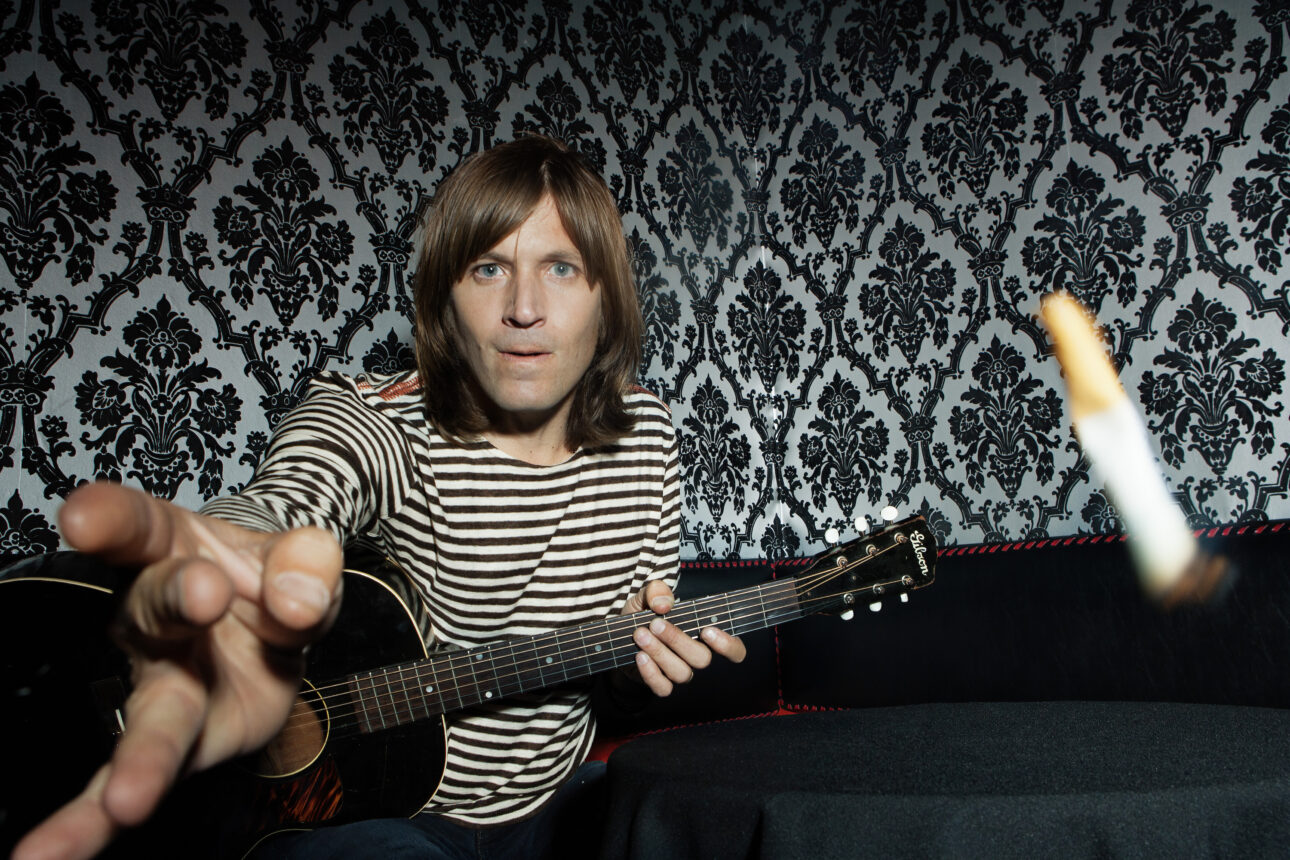
You managed to snap an amazing action shot of the Libertines on stage at Coachella with Pete Doherty flinging beer at Carl Barat who is being hugged by a fan. I love it. What do you remember of that moment?
All the kids started jumping on stage and were so excited because it was their second time getting to see the Libertines play [at] Coachella. They got the power pulled on the first night so they played the next day and everyone was like, “Two times! Yeah!” That was the second day because it was daytime, hot and they weren’t wearing shirts.
What was going on in the photo where Evan Dando is flinging a lit cigarette at the camera, presumably at you?
He had been on a bender for a few days. He didn’t show up to the shoot. I had to go find him at his hotel and bring him to the first location. Even though he hadn’t really slept, he was on fire. I was photographing him while he was smoking cigarettes and he flipped a cigarette. I shot a picture and then I thought, “That would be so funny if I could actually catch the cigarette in the air.” I had brought props with me including these World War II goggles. I put them on and started shooting as he was flicking lit cigarettes at me, and I got that picture.
Evan is the best person I’ve ever shot. It’s like photographing a child where you’re like, “Sit still,” and they’re like, “I’m going to stand on my head.” I have pictures of him standing on his head in the booth with his feet in pink socks. Then he would topple over and look up at you and his hair all messed up. Every single time the camera would snap, he was moving, twisting, turning. That’s just who he is. He is inherently bizarre and energized. He doesn’t ever stop. The guy is legit.
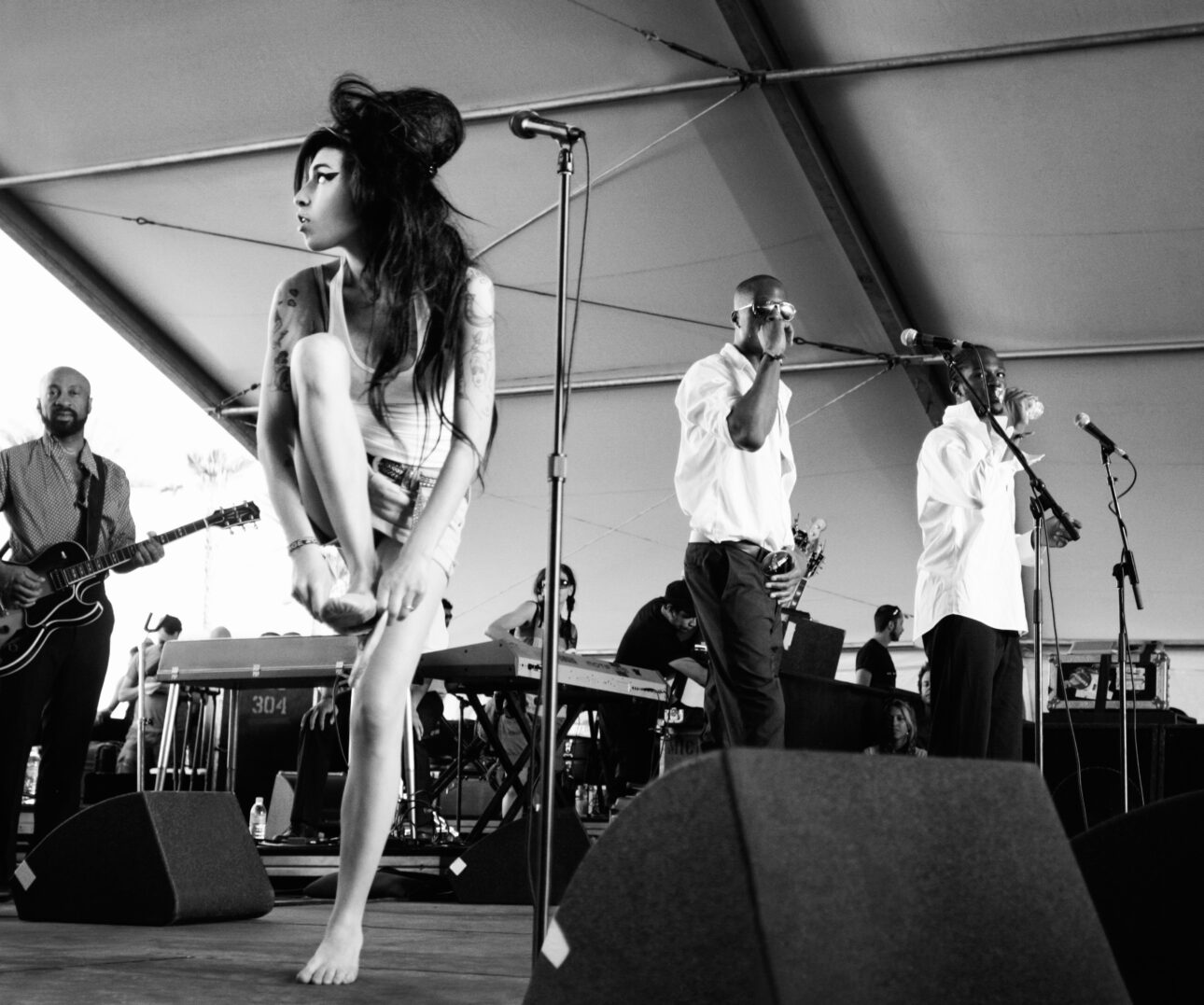
Throughout the book, you share some great narratives about specific experiences, for example, with Coldplay’s Chris Martin and Foxygen’s Sam France. How did you decide which artists to talk about?
I chose what felt like a “moment” that I really connected with and that really connected with me. I never thought “Oh these might be important to have one day.” I never would have even known to feel that way at that time. Not everybody is going to know half the bands in the book, but while I was in that moment with these bands, they were all important to me. They were all saying something. They were all very unique and innovative in their approach. It felt like they were coming from a real place of wanting to rock out in their own way.
Isn’t it mind-blowing to trace back your accomplishments to obsolete Time/Life books at a garage sale?
Coming to LA and thinking I could work in the film industry or do any of the things I was able to do was not even a notion or a possibility, especially as a woman. The fact that I’ve done what I have done, to me, is such a huge gift.
I loved photography because it got me closer to music. That was my special purpose. Instead of just being a fan, instead of just hanging around, instead of just staying out late with everybody, I was always taking pictures—and probably annoying everybody with my camera.
